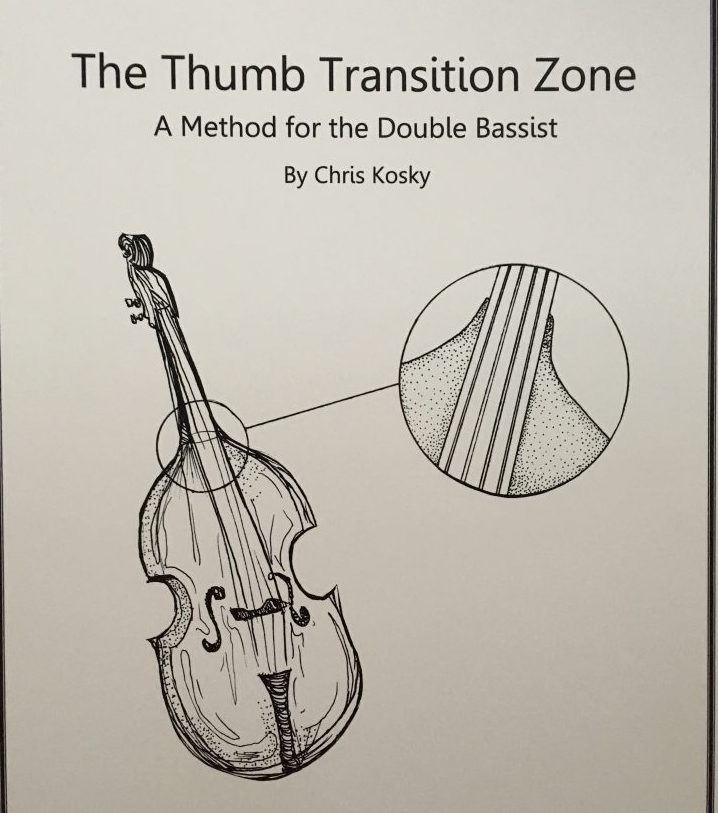What is The Thumb Transition Zone?
For intermediate and advanced bassists, The Thumb Transition Zone tackles the fingering quagmire of the middle area of the Double Bass fingerboard. This method turns awkward into easy by providing exercises and etudes that give the bassist’s left hand the options needed to play effortlessly and more musically around the shoulders of the instrument. Advanced players will find a solution to fingering in this traditionally tricky part of the fingerboard, while intermediate-level bassists, those just getting near and into Thumb Position, can learn an easier way around right from the beginning.
About The Thumb Transition Zone:
Published in 2019. Soft-cover, spiral bound– lays nicely on a music stand– 35 pages, instructions written in English. Retail price is $15 USD. Cover art by Claire Bubeck.

Chris Kosky, a seasoned and savvy bassist, has a fresh concept for developing a more succinct approach to this particular “zone” of the bass that eludes many players. Her written examples and exercises are clearly written and cover a broad musical scope. All players of the double bass who are developing to control clarity coming out of their bass will, without a doubt, benefit from checking this method thoroughly.
~ Rufus Reid, Jazz Bassist, Composer, Author of “THE EVOLVING BASSIST”
The transition zone between the lower position and thumb position is the birthplace of so many technical gremlins that plague the developing performer. I think this may be the first pedagogy dedicated to looking at the issues in a simple, step-wise fashion with many creative exercises and samples from the literature. I highly recommend it to every bass teacher.
~ Diana Gannett, Professor Emerita of Double Bass, University of Michigan, Ann Arbor
I will use Chris’s book with my own students because it is systematic and fills many gaps in most method books. When the bassist can build a new technical approach to the left hand through exercise and methodical training, the use of the low thumb positions becomes a primary tool in the bassist’s technique… not just an ill-prepared, and under-disciplined meager solution to a passage. This can be a primary tool when it is properly learned with adequate, methodical and progress exercises. Chris Kosky’s book will fill this gap and solve this problem. Get this book and practice it with patience, repetition and discipline. It will help! Bravo Chris!
~ Barry Green, Bass Professor, The Ohio State University; Author; former Principal Bassist, Cincinnati Symphony
